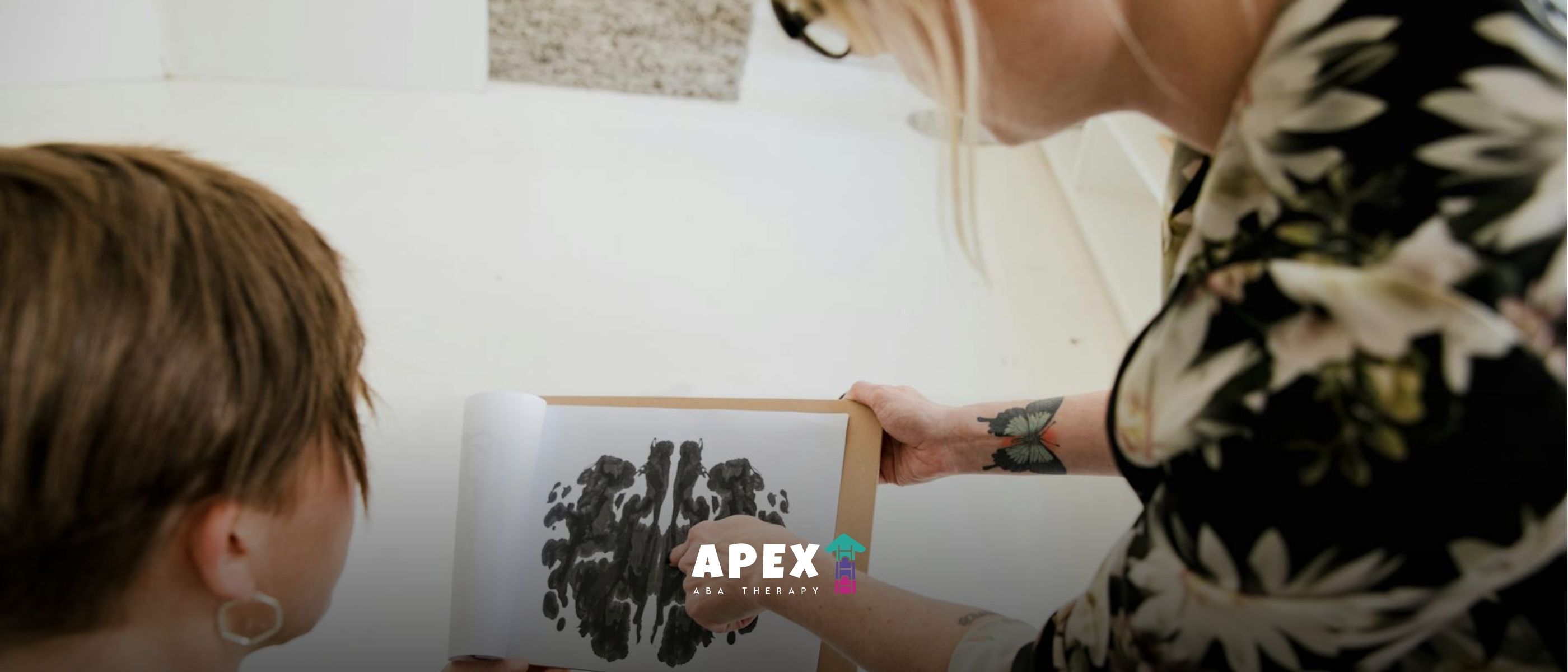Does Mold Cause Autism?
Some studies have suggested a possible link between mold exposure and autism, but the evidence is inconclusive.
.jpg)
Does Mold Cause Autism?
Does Mold Cause Autism?
Mold is a type of fungus that grows in damp and humid environments and can cause various health problems.

Autism, on the other hand, is a neurodevelopmental disorder that affects communication, behavior, and social interaction. Some studies have suggested a possible link between mold exposure and autism, but the evidence is inconclusive.
Mold and Its Health Effects
Mold can cause a variety of health problems, especially for those with weakened immune systems or respiratory issues. Exposure to mold can trigger allergic reactions, including sneezing, runny nose, and itchy eyes. In severe cases, mold exposure can lead to asthma attacks and lung infections.
Additionally, some types of mold produce mycotoxins that can be harmful if ingested or inhaled. These toxins have been linked to neurological symptoms such as headaches, dizziness, and confusion.
It is important to address any mold growth in homes or buildings promptly to prevent potential health risks. This may include fixing leaks or moisture issues and properly cleaning and removing any visible mold.
The Link Between Mold and Autism
Some studies have shown that exposure to mold can lead to neurological problems, including autism. A 2016 study published in the Journal of Autism and Developmental Disorders found that children who were exposed to mold in their homes were more likely to develop autism.
The study also found that a specific type of mold called Penicillium was linked to a higher risk of autism.
However, other studies have failed to find a significant link between mold exposure and autism. For example, a 2013 study published in the Journal of Child Psychology and Psychiatry found that there was no association between mold exposure and autism.

The Possible Mechanisms
The exact mechanisms by which mold exposure may lead to autism are not yet fully understood. However, some researchers have proposed several possible explanations.
One theory is that mold exposure can cause inflammation in the brain, which may affect brain development and lead to autism. When an individual is exposed to mold, it can trigger an immune response in the body which can lead to inflammation.
This inflammation can then spread to other parts of the body, including the brain, causing damage and impairing brain function.
Another theory is that mold exposure can disrupt the gut microbiome, which may also play a role in autism. The gut contains trillions of bacteria, viruses, and fungi that all play a role in regulating the immune system and communicating with the brain.
When the balance of these microorganisms is disrupted, it can lead to a wide range of health problems, including autism.
It is important to note that while these theories are still being researched and studied, there is no conclusive evidence linking mold exposure to autism. However, it is always important to be aware of the potential risks associated with mold exposure and take steps to prevent it in your home or workplace.
What the Experts Say?
According to the Centers for Disease Control and Prevention (CDC), mold exposure is a concern for many people, particularly those with respiratory issues. However, the link between mold exposure and autism is uncertain. The CDC acknowledges that more research is needed to establish a clear connection between the two.
Similarly, the American Academy of Pediatrics (AAP) has also noted that there is no conclusive evidence linking mold exposure to autism. While mold exposure may cause respiratory symptoms such as coughing and wheezing, it is important to note that these symptoms are not unique to autism.
It is essential to remain vigilant about potential health risks associated with mold exposure. However, it's also important to rely on accurate information when making health decisions. As more research is conducted, we will continue to learn more about the potential risks and benefits of mold exposure.
The Symptoms of Mold Exposure
Mold exposure can cause a variety of symptoms, depending on the individual's sensitivity to mold and the amount of exposure. Some common symptoms of mold exposure include:
- Nasal congestion
- Sneezing
- Coughing
- Wheezing or difficulty breathing
- Eye irritation, such as redness or itching
- Skin rash or irritation
- Headache
- Fatigue or weakness
In some cases, mold exposure can also lead to more severe health problems, particularly in individuals with pre-existing respiratory conditions. These may include:
- Asthma attacks
- Bronchitis
- Pneumonia
It is important to seek medical attention if you experience any of these symptoms after being exposed to mold. Additionally, it is recommended that individuals with respiratory conditions avoid exposure to mold whenever possible and take steps to prevent mold growth in their homes or workplaces.
How to Identify and Prevent Mold Growth?
Mold growth can occur in any damp or humid environment, making it important to be proactive in preventing mold from growing in your home or workplace. Here are some tips for identifying and preventing mold growth:
Identifying Mold Growth
- Look for visible signs of mold, such as black or green spots on walls, ceilings, or floors.
- Use your sense of smell to detect musty odors, which may indicate the presence of mold.
- Check for water stains or discoloration on walls, ceilings, or floors.
Preventing Mold Growth
- Address any leaks or moisture issues immediately. This includes fixing leaky pipes and roofs and ensuring proper ventilation in bathrooms and kitchens.
- Keep humidity levels low by using dehumidifiers and air conditioners.
- Clean up spills and standing water immediately.
- Regularly clean and disinfect areas where moisture is common, such as bathrooms and kitchens.
- Use mold-resistant products when building or renovating your home.
By being vigilant about moisture levels in your home or workplace, you can help prevent mold growth before it becomes a bigger problem. If you do notice signs of mold growth, it's important to address the issue promptly to prevent further damage and potential health problems.
The Role of Genetics in Autism Development
While the link between mold exposure and autism is still uncertain, research has established that genetics play a significant role in the development of autism. Studies have shown that certain genetic mutations and variations can increase the risk of developing autism.
Autism is known to run in families, and siblings of individuals with autism are more likely to develop the disorder than those without a family history. According to the National Institute of Neurological Disorders and Stroke (NINDS), as many as 20% of siblings of individuals with autism may also develop the disorder.
Research has also identified specific genes that may be linked to an increased risk of developing autism. For example, mutations in genes such as SHANK3, CHD8, and TSC2 have been associated with a higher risk of developing autism.
However, it's important to note that genetics alone cannot fully explain the development of autism. Other factors, such as environmental exposures and epigenetic changes, may also play a role in its development.
As our understanding of genetics continues to advance, researchers hope to gain further insights into the complex interplay between genetic and environmental factors that contribute to the development of autism.
Other Environmental Factors that May Contribute to Autism
While the link between mold exposure and autism is still uncertain, there are other environmental factors that have been suggested as potential contributors to the development of autism. Here are some examples:
Prenatal Exposure to Chemicals
Exposure to certain chemicals during pregnancy has been linked to an increased risk of autism. For example, a study published in Environmental Health Perspectives found that pregnant women who were exposed to pesticides were more likely to have children with autism.
Another study published in JAMA Pediatrics found that exposure to air pollution during pregnancy was associated with an increased risk of autism.
Maternal Infections
Maternal infections during pregnancy have also been linked to an increased risk of autism. A study published in JAMA Psychiatry found that children born to mothers who had a severe infection during pregnancy were at a higher risk of developing autism.
Nutritional Deficiencies
Nutritional deficiencies during pregnancy may also play a role in the development of autism. For example, a study published in the Journal of Autism and Developmental Disorders found that pregnant women who had low levels of vitamin D were more likely to have children with autism.
Additionally, deficiencies in other nutrients such as folate and omega-3 fatty acids have also been linked to an increased risk of autism.
While more research is needed to fully understand the role that these environmental factors play in the development of autism, it's important for expectant mothers and parents of young children to be aware of these potential risks and take steps to minimize their exposure whenever possible.
How to Properly Clean and Remove Mold?
If you have identified mold growth in your home or workplace, it's important to take steps to remove it promptly. Here are some tips for properly cleaning and removing mold from surfaces:
- Wear protective gear: Before you begin cleaning, be sure to wear gloves, goggles, and a mask to protect yourself from exposure to mold spores.
- Identify the affected area: Carefully inspect the affected area and identify which surfaces are contaminated with mold.
- Prepare a cleaning solution: Mix one cup of bleach with one gallon of water in a spray bottle or bucket.
- Apply the solution: Spray or apply the cleaning solution onto the affected surfaces, making sure to cover all visible mold growth.
- Let it sit: Allow the cleaning solution to sit on the surface for at least 15 minutes before wiping it away.
- Scrub away the mold: Use a scrub brush or sponge to scrub away any remaining mold growth on the surface.
- Rinse and dry: After scrubbing away the mold, rinse the surface with clean water and dry thoroughly with a clean towel or cloth.
- Dispose of contaminated materials: Any materials that cannot be cleaned, such as carpeting or drywall, should be disposed of properly according to local regulations.
By following these steps, you can effectively remove mold growth from your home or workplace and prevent further health risks associated with prolonged exposure. It's also important to address any underlying moisture issues that may have contributed to the growth of mold in order to prevent future contamination.
Current Research Between Mold Exposure and Autism
Despite inconclusive evidence on the link between mold exposure and autism, researchers continue to investigate the possible connection. Some recent studies have shown promising results in understanding the relationship.
A 2019 study published in the journal Environmental Research found that children with autism had higher levels of certain mycotoxins in their urine compared to typically developing children. The study also found that these mycotoxins were associated with greater impairments in communication and behavior.
Another recent study published in the Journal of Toxicology and Environmental Health examined the effects of mold exposure on brain development in mice.
The study found that exposure to a specific type of mold called Stachybotrys chartarum during early development led to changes in brain structure and function, as well as behavioral abnormalities similar to those seen in autism.
While these studies provide some insight into the possible mechanisms linking mold exposure and autism, more research is needed to establish a clear connection. It is important for researchers to continue investigating this topic to better understand how environmental factors may contribute to autism development.
FAQs
Is there a specific type of mold that is more likely to cause autism?
While some studies have found a link between certain types of mold, such as Penicillium, and an increased risk of autism, there is no conclusive evidence that any specific type of mold causes autism.
Can exposure to mold during pregnancy increase the risk of autism in the unborn child?
The link between prenatal exposure to mold and autism is uncertain. However, exposure to other environmental factors during pregnancy, such as pesticides and air pollution, has been associated with an increased risk of autism.
Are children who are exposed to mold at a higher risk of developing other health problems besides autism?
Yes, exposure to mold can cause a variety of health problems, particularly in individuals with weakened immune systems or respiratory issues. These may include allergic reactions, asthma attacks, bronchitis, and pneumonia.
Can cleaning up visible mold prevent potential health risks associated with mold exposure?
While cleaning up visible mold is an important step in preventing further growth and potential health risks, it may not be enough to fully address the issue. Mold can also grow in hidden areas such as inside walls or under carpets. It is important to address any moisture issues and properly clean and remove all sources of mold to prevent future growth.
Conclusion
In conclusion, while some studies have suggested a possible link between mold exposure and autism, the evidence is not conclusive. More research is needed to establish a clear connection between the two.
If you are concerned about mold exposure in your home, it is important to address the issue promptly by identifying and removing the source of the mold. However, there is no need to panic about a potential link to autism at this time.
Sources
Frequently Asked Questions
.jpg)
Facial Features & Physical Characteristics Of Autism
Some researchers believe that these physical characteristics are related to the underlying neurological differences in individuals with autism.

Breaking Barriers: Free Sensory Toys for Autism That Make a Difference
Discover life-changing free sensory toys for autism! Unlock the power of sensory play for children with autism.

Distinguishing ADHD vs Autism Stimming
ADHD stimming vs autism stimming: Discover the motivations and characteristics behind these behaviors in individuals.

The Three Main Causes of Autism: Exploring Genetics, Environment, and Brain Differences
Autism is influenced by genetics, environmental factors, and brain differences. Learn how these three causes contribute to the development of the condition.

What are the Common Behaviors of Autism?
Autism behaviors can vary widely. Learn about the most common traits, from social difficulties to sensory sensitivities, and how ABA therapy can support progress.

What Age is Too Late for ABA Therapy?
It’s never too late to start ABA therapy. Discover how children, teens, and adults can still make meaningful progress with personalized ABA support.

Is In-Home ABA the Right Fit for Your Child? Here’s What You Need to Know
In-home ABA therapy offers a tailored approach to support your child’s development. Learn how it can improve key skills like communication, social interaction, and more.

How Families Can Make ABA Therapy a Positive and Successful Experience
Learn how families can ensure ABA therapy is a positive, successful experience. Discover tips for involvement, consistency, and support to make ABA effective.

Can a Child Have Autism and Still Talk Normally?
Can a Child Have Autism and Still Talk Normally?

What Are the Red Flags for Autism in a 2-Year-Old?
Autism Red Flags in 2-Year-Old Children | Apex ABA

Is Autism a Lifelong Condition?
Is Autism a Lifelong Condition? Understanding The Journey

Best Age to Start ABA Therapy & What Parents Should Know
Best Age to Begin ABA Therapy for Children | Apex ABA

What’s the Difference Between High-Functioning Autism and Asperger’s?
Difference Between High-Functioning Autism and Asperger’s

ABA Therapy Enhancing Social Skills: A Key to Improved Communication and Interaction for Children with Autism
How ABA Therapy Helps Children Build Social Skills

Misconceptions About ABA Therapy: Clearing Up the Myths
Common Misconceptions About ABA Therapy | Apex ABA

What Does It Mean to Be “On the Spectrum”?
What Does It Mean to Be on the Autism Spectrum? | Apex ABA

Understanding the Power of Functional Behavior Assessment ABA
Effective ABA Techniques for Behavioral Intervention

Discover How ABA Helps ADHD in Your Child’s Life
How ABA Therapy Helps Children with ADHD | Apex ABA

Life-Changing ABA Therapy Case Studies You Need to Know
Real Success Stories from ABA Therapy Journeys | Apex ABA

Can Children “Outgrow” Autism?
Can Children Outgrow Autism? Understanding the Facts

Is Autism a Mental Illness or a Developmental Disorder?
Mental Illness or Developmental Disorder Explained

Is Autism More Common in Boys Than Girls?
Autism in Boys vs Girls: What the Research Reveals

What is the Difference Between Autism and Sensory Processing Disorder?
Autism vs Sensory Processing Disorder Differences | Apex ABA

What's the Difference Between Autism and Speech Delay?
Autism vs Speech Delay & Key Differences Explained | Apex

ABA Therapy in North Carolina: A Complete Guide for Families
Learn everything about ABA therapy in North Carolina, including services, costs, insurance coverage, and how to choose the best ABA provider in North Carolina.

ABA Therapy vs Preschool: Making the Right Choice Explained
Learn the key differences between ABA therapy and preschool to help you choose the best option for supporting your child’s early learning and development.

Which Personality Type Is Most Likely to Be Autistic?
Which Personality Type Is Most Likely to Be Autistic? | Apex ABA

Why Consistency Matters: What Happens If ABA Therapy Ends Prematurely
What Happens If ABA Therapy Is Stopped Too Early? | Apex ABA

How Can You Gain an Autistic Person’s Attention? Tips for Meaningful Connection
How Can You Gain an Autistic Person’s Attention?

Sensory Sensitivity and Sixth Sense: What Autism Research Shows
Do Autistic People Have Sixth Sense? | Apex ABA

What Happens If Autism Is Left Untreated?
Can Autism Get Worse If Untreated? | Apex ABA

What Not To Do With An Autistic Child: Avoid These 10 Mistakes
What Not To Do With An Autistic Child? | Apex ABA

Coping with Regressive Autism: Tips for Parents
What is Regressive Autism? | Apex ABA

Do Autistic Kids Live with Parents Forever? Here’s the Reality
Do autistic kids live with parents forever? Discover the facts about independence and living arrangements in autism with expert-backed insights.

Red Flags in ABA Therapy: What Parents Must Watch For
What are the red flags in ABA therapy? Learn to identify warning signs for safe, effective autism treatment in this blog.

Can You Go from Level 3 Autism to Level 1? Is It Possible?
Can you go from level 3 autism to level 1? Learn about progress, therapy, and support options with expert help from Apex ABA.

Autism vs Introversion: How to Tell the Difference
Is it autism or just introversion? Learn the key differences and signs with expert insights from Apex ABA.

ABA for Managing Transitions: Tips to Ease Change for Kids
Learn how ABA for managing transitions helps children with autism handle change smoothly.

Understanding the 7 Dimensions of ABA for Better Outcomes
Discover the 7 Dimensions of ABA and how they can lead to better outcomes.

5 Unique Autistic Love Languages You Should Know About
Discover the 5 unique autistic love languages that can enhance your relationships.

Transforming Futures: Improving Lives of Kids with Autism
Discover how innovative strategies are focused on improving lives of kids with autism.

ABA Therapy Techniques for Addressing Repetitive Behaviors in Autism
Harnessing ABA Strategies to Tackle Repetitive Behaviors in Autism

The Role of ABA Therapy in Enhancing Communication Skills
Transforming Communication for Children with Autism Through ABA Therapy

How ABA Therapy Supports Effective Communication in Nonverbal Children
Unlocking Speech Through ABA: Transformative Paths for Nonverbal Children

How to Help Your Child Transfer Skills Learned in ABA Therapy to Real Life
Unlocking Real-World Success for Children in ABA Therapy

How ABA Therapy Helps Children Develop Better Organizational Skills
Empowering Children with ABA Therapy for Enhanced Organizational Skills

The Importance of Creating a Structured Routine in ABA Therapy
How Structured Routines Transform ABA Therapy for Autism

The Role of ABA Therapy in Developing Conflict Resolution Skills
How ABA Therapy Transforms Conflict Resolution Competence

The Importance of Generalization in ABA Therapy for Autism
Unraveling the Role of Generalization in Enhancing ABA Therapy Outcomes

Why ABA Therapy is Crucial for Parents of Children with Autism
The Transformative Impact of ABA Therapy on Families with Autistic Children

How to Involve Parents in the ABA Therapy Process
Maximize Parent Engagement in ABA Therapy for Better Outcomes

What are the Core Principles of ABA Therapy?
Exploring the Cornerstones of Applied Behavior Analysis

Why Communication is Key in ABA Therapy for Autism
The Crucial Role of Communication in ABA Therapy for Autism

Why ABA Therapy Works for Children with Autism Regardless of Severity
Effective ABA Interventions for All Levels of Autism

Why It’s Important to Maintain a Balanced Approach to ABA Therapy
Balancing Effectiveness and Ethics in ABA Therapy

The Role of ABA Therapy in Developing Adaptive Behavior Skills
Exploring How ABA Therapy Transforms Lives

The Benefits of Combining ABA Therapy with Speech Therapy
Maximizing Development with Integrated Therapy Approaches

What to Expect During an ABA Therapy Session
Demystifying ABA Therapy Sessions: A Comprehensive Overview

How ABA Therapy Enhances Cognitive Functioning in Children with Autism
Exploring the Influence of Applied Behavior Analysis on Autism Cognition

How ABA Therapy Helps Children with Autism with Transitions Between Activities
Easing Transitions for Children with Autism: The Role of ABA Therapy

How to Foster Cooperation Between Parents and Therapists in ABA Therapy
Building Effective Partnerships in ABA Therapy

The Role of Positive Reinforcement in ABA Therapy
Exploring the Impact of Positive Reinforcement in Modern ABA Therapy

Why ABA Therapy is Effective for Children of All Ages
Understanding the Reach and Impact of ABA Therapy Across Age Groups

How to Support Your Child’s Emotional Growth with ABA Therapy
Harnessing ABA Therapy for Enhancing Emotional Development in Children with Autism

The Role of ABA Therapy in Enhancing Peer Relationships for Children with Autism
Harnessing ABA Therapy to Boost Social Connections Among Autistic Children

How to Overcome Common Challenges in ABA Therapy
Navigating Hurdles in ABA Therapy: Strategies and Solutions

How to Manage Behavioral Expectations with ABA Therapy
Understanding Applied Behavior Analysis in Behavioral Management

How ABA Therapy Promotes Emotional Regulation in Children with Autism
Unlocking Emotional Balance: ABA Therapy's Role in Autism

How ABA Therapy Improves Social Skills in Children with Autism
Harnessing ABA Therapy to Enhance Social Competency in Autistic Children

The Role of ABA Therapy in Classroom Success for Children with Autism
Harnessing ABA for Academic and Social Growth in Autism

The Importance of Evaluating and Revising ABA Therapy Goals Regularly
Regular Evaluations: The Cornerstone of ABA Therapy Success

How to Choose the Right ABA Therapy Program for Your Child
Finding the Perfect ABA Therapy Fit for Your Child

The Role of Behavior Analysts in Implementing ABA Therapy
Understanding the Vital Contributions of Behavior Analysts in ABA Therapy

The Role of RBTs (Registered Behavior Technicians) in ABA Therapy
A Closer Look at the Essential Work of RBTs in ABA Therapy

What Makes ABA Therapy Effective for Different Learning Styles?
Unraveling the Flexibility and Effectiveness of ABA Therapy

Understanding the Importance of Data Collection in ABA Therapy
The Role of Data in Shaping Effective ABA Therapy

How ABA Therapy Helps with Toilet Training in Children with Autism
Unlocking Independence: ABA's Role in Autism Toilet Training

The Importance of Encouraging Natural Play in ABA Therapy
Revolutionizing ABA Therapy with Natural Play

How to Make the Most of ABA Therapy at Home
Enhancing ABA Therapy Practices Within Your Home

How to Make ABA Therapy Fun and Engaging for Children with Autism
Transforming ABA Therapy into a Fun Learning Journey

The Role of ABA Therapy in Addressing Verbal and Nonverbal Communication in Autism
Enhancing Communication Skills in Autism Through ABA Therapy

Understanding the Role of Family in ABA Therapy for Autism
The Crucial Impact of Family Engagement in Autism Therapy

How to Handle Setbacks and Challenges in ABA Therapy
Navigating Difficulties and Setbacks in ABA Therapy for Children

How ABA Therapy Can Help Children Build Stronger Relationships with Peers
Unpacking the Influence of ABA Therapy on Peer Relationships in Children

Understanding the Concept of Shaping in ABA Therapy
Demystifying Shaping Techniques in Applied Behavior Analysis

How ABA Therapy Enhances Independent Living Skills in Autism
Unlocking Independence: The Role of ABA Therapy in Autism
.jpg)
90+ Reading Statistics, Facts and Demographics
In this article, we will dive into 60 reading statistics that shed light on the importance of reading and its impact on different aspects of life.

How ABA Therapy Can Help Children with Autism Make Better Choices
Unlocking Autistic Children's Potential with ABA Therapy

How ABA Therapy Helps Children with Autism Adapt to New Environments
The Adaptive Benefits of ABA Therapy for Autism

What Does the Research Say About the Effectiveness of ABA Therapy?
Exploring the Role and Research Behind ABA Therapy

How to Create an Effective ABA Therapy Plan for Your Child
Guiding Parents Through Effective ABA Therapy Planning

The Long-Term Benefits of Consistent ABA Therapy for Children with Autism
Unlocking Potential: Consistent ABA Therapy for Autism

Why ABA Therapy Should Be Tailored to Each Child’s Unique Needs
The Necessity of Customizing ABA Therapy for Unique Child Development

What are the Different Types of ABA Therapy?
Exploring the Varieties of ABA Therapy for Autism and Beyond

How ABA Therapy Can Improve Functional Skills in Children with Autism
Unlocking the Potential: ABA Therapy for Autistic Children

How ABA Therapy Facilitates Peer Interaction for Children with Autism
Understanding the Impact of ABA Therapy on Autism and Peer Relationships

The Importance of Early Intervention in Autism Therapy
Unlocking Potential: The Crucial Role of Early Intervention in Autism

The Role of ABA Therapy in Creating Healthy Habits for Children with Autism
Understanding How ABA Therapy Shapes Daily Life for Autistic Children

How to Create a Supportive Environment for Children Undergoing ABA Therapy
Crafting a Nurturing Space for Effective ABA Therapy

The Benefits of Incorporating Technology into ABA Therapy
Harnessing Technology for Enhanced ABA Therapy Outcomes



